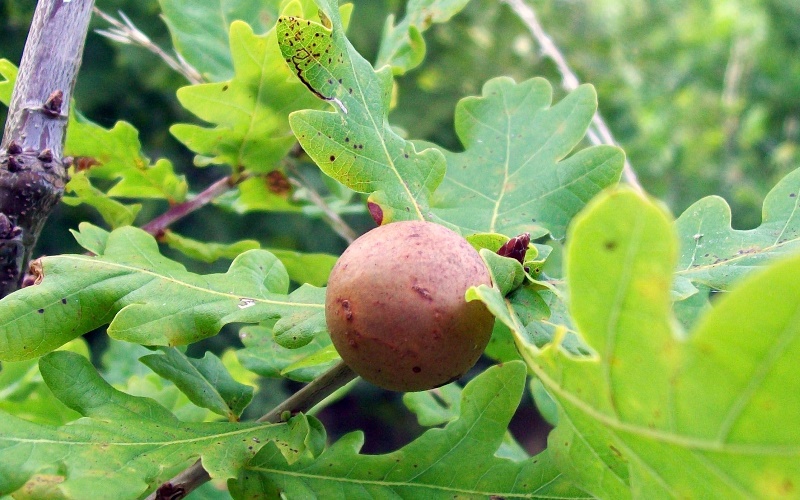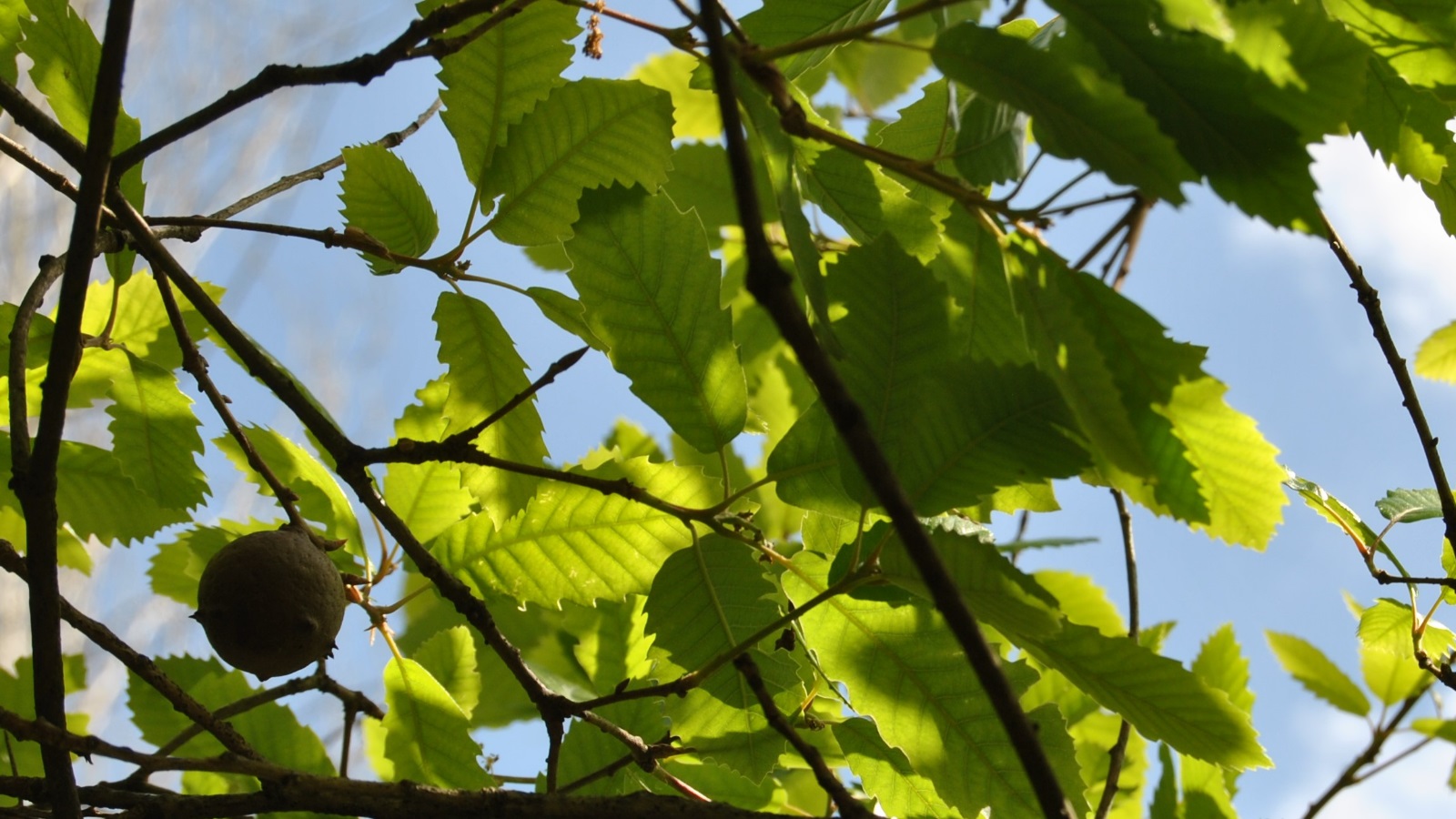Why do some trees have galls?
A naturalist in the Gulbenkian Garden
It’s easy to confuse acorns with galls. At first glance they may look very similar but they are, in fact, very different things.
The acorn is the fruit of the oak tree, a dried fruit with a single seed and pericarp (the outer layer of the fruit that protects the seed). “Galls are cellular multiplications that form on plant organs in response to insect bites or the attack of fungi, bacteria and nematodes,” explains Maria João Horta Parreira. Therefore, galls are not fruit but structures that plants produce in response to external aggressions.
Galls can be found on many different plants species, such as oak and chestnut trees. “Oaks are particularly prone to the formation of galls, most of which are caused by hymenopteran insects (bees, wasps and ants),” she adds. Interactions between plants and insects have always occurred naturally and spontaneously.

Just as the acorns of different oak species differ from one another, each gall is specific to its agent (known as a galler) and they are all unique in shape and colour. “Galls may be more or less spherical, with or without spikes and of various different shades.” In addition to the differences resulting from the specific causative agent, galls also vary according to the sting’s location and the plants affected.
Generally, “galls serve as safe havens for insects to lay their eggs, protected from potential predators.” This is the strategy adopted by the gall wasp (Cynips tozae), for example. This wasp looks for places to lay its eggs which will protect them and be a source of food during metamorphosis, so that the life cycle can be completed by adulthood. At this point, it will leave the gall as can be seen by the hole it leaves on it.
In addition to providing shelter and food for the agents that provoke them, “galls can also be reused by other insects that use them for shelter when the gallers have left the gall”, she points out.

